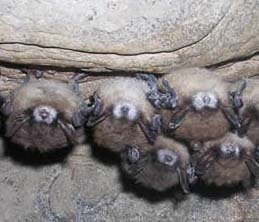 My first mother-in-law was born and raised in Tennessee. She was a wonderful cook, and I learned to eat “real” food, as well as “southern” food at her table. As I may have noted earlier, my mother was an awful cook of even very ordinary and plain things. Food held no delights for her or, by extension, for my sis and me. So when I married into Ida May's family, I learned not only that real food could taste wonderful but also about corn bread cooked in a skillet, green beans simmered in a pot for hours with strips of bacon, and just how delicious fried okra was. I was especially fond of her fried okra, and even though I watched how she made it, I did not have the knack for cooking it. I tried many times without success. So knowing this, when she fixed it she would always phone us to come on over and help her eat it.
My first mother-in-law was born and raised in Tennessee. She was a wonderful cook, and I learned to eat “real” food, as well as “southern” food at her table. As I may have noted earlier, my mother was an awful cook of even very ordinary and plain things. Food held no delights for her or, by extension, for my sis and me. So when I married into Ida May's family, I learned not only that real food could taste wonderful but also about corn bread cooked in a skillet, green beans simmered in a pot for hours with strips of bacon, and just how delicious fried okra was. I was especially fond of her fried okra, and even though I watched how she made it, I did not have the knack for cooking it. I tried many times without success. So knowing this, when she fixed it she would always phone us to come on over and help her eat it.One day last summer while at the local laundromat I was nosing around in a magazine and came upon a new recipe for okra. The developer of the recipe was a southern cook used to making fried okra, but he had "seen the light" about not cooking with so much bacon fat (which of course is what made fried okra exceptionally tasty) and he said this: Don't spoil the okra by frying it or cooking it in gumbo. Pick out small okra pods, wash them lightly and sauté them in a frying pan with a balance of olive oil and butter. Cook them until they are just "al dente" (maybe 5 or 6 minutes), then drain, add salt and pepper and eat while hot. He swears that cooks have missed the boat for years by cooking them any other way. He says they were slimy in gumbos (that is correct) and lost their greenness to dark brown when fried in bacon fat (they did). He assures the readers that we will never want to eat them cooked any other way once we try his new way!
I tried his way, and I have two thoughts: Either this man wrote the new recipe just to have something published or he was crazy. I found it hard to believe that his highly touted healthy-cooking okra recipe would be good, and by golly, it wasn’t. I bought baby okra and followed his directions perfectly. And when I put those little sautéed okras in my mouth it was like trying to eat a slimy, hairy crispy bug. They were awful. How could that man say that we’d never go back to fried okra in bacon fat again? I don’t know what that man was thinking.
 Although Ida May never cooked grits to my knowledge, I later learned in a visit to Baton Rouge that grits were eminently edible. Our cousin Beryl served them as she would mashed potatoes. They were sitting on the dinner plate in a pile; a huge chunk of butter was slathered on the top and then the whole mountain of grits was salted and peppered within an inch of its life. Never having tasted grits I wasn’t sure that I was going to be all that enamored of them, but I quickly learned that I had really missed out on something yummy. Later while having breakfast in a local restaurant we were served sausage and eggs with a helping of grits on the plate – and those grits were of a consistency of something like Cream of Wheat. Again I wasn’t sure I was going to like them, but they were just as good that way (doctored with butter and seasonings) as when they were standing upright in a mound on my dinner plate. And many years later my cousin in Swansboro, North Carolina, took me to a restaurant that served “Shrimp and Grits” for lunch, which was a bowl of Grits and cheese, topped with shrimp and a marinara sauce. It was to die for.
Although Ida May never cooked grits to my knowledge, I later learned in a visit to Baton Rouge that grits were eminently edible. Our cousin Beryl served them as she would mashed potatoes. They were sitting on the dinner plate in a pile; a huge chunk of butter was slathered on the top and then the whole mountain of grits was salted and peppered within an inch of its life. Never having tasted grits I wasn’t sure that I was going to be all that enamored of them, but I quickly learned that I had really missed out on something yummy. Later while having breakfast in a local restaurant we were served sausage and eggs with a helping of grits on the plate – and those grits were of a consistency of something like Cream of Wheat. Again I wasn’t sure I was going to like them, but they were just as good that way (doctored with butter and seasonings) as when they were standing upright in a mound on my dinner plate. And many years later my cousin in Swansboro, North Carolina, took me to a restaurant that served “Shrimp and Grits” for lunch, which was a bowl of Grits and cheese, topped with shrimp and a marinara sauce. It was to die for.I am convinced that if grits had a more esthetically-pleasing name, more people would like them. “Grits” and “eggplant” are two delights that I believe suffer from misnaming. I am not a connoisseur of southern foods (and especially not of pig-picking), but at least for the few things I have a personal acquaintance with I can be counted as one of the loyal cheerleaders.



 How long is tolerable to wait on hold for someone to come to the phone? I think probably everyone has his or her own time frame, but an article in the paper this morning said that in an informal poll taken by the newspaper, as long as there was music playing on the telephone the bulk of the people questioned said 15 minutes was the far end of what was tolerable. I was surprised that in this day and age anyone would find 15 minutes of waiting acceptable. Now having said that, I must 'fess up to being on hold that long when I call my doctor's office to make an appointment. Not waiting is like shooting yourself in the foot.
How long is tolerable to wait on hold for someone to come to the phone? I think probably everyone has his or her own time frame, but an article in the paper this morning said that in an informal poll taken by the newspaper, as long as there was music playing on the telephone the bulk of the people questioned said 15 minutes was the far end of what was tolerable. I was surprised that in this day and age anyone would find 15 minutes of waiting acceptable. Now having said that, I must 'fess up to being on hold that long when I call my doctor's office to make an appointment. Not waiting is like shooting yourself in the foot.










 The Corels lived through the "Bloody Kansas" period. Nannie's first husband, Francois "Frank" LaHay was the son of Toussaint LaHay. The LaHays were French Canadians living in St. Genevieve, Missouri. When Kansas opened up and a vote was to be taken to see whether it should be admitted as a free or a slave state, Toussaint and his sons, Francois, Antoine and John, moved to Douglas County as southern supporters. The boys were a part of the border ruffians. Of course there were plenty of northern supporters whose activities often mirrored the mayhem caused by the southerns. Toussaint had built the family a very nice house, and in the course of the difficulty it was burned to the ground by the northerners. During this time Nancy married Frank LaHay and there is a family story about her throwing pans at the "soldiers" when they came to destroy the house.
The Corels lived through the "Bloody Kansas" period. Nannie's first husband, Francois "Frank" LaHay was the son of Toussaint LaHay. The LaHays were French Canadians living in St. Genevieve, Missouri. When Kansas opened up and a vote was to be taken to see whether it should be admitted as a free or a slave state, Toussaint and his sons, Francois, Antoine and John, moved to Douglas County as southern supporters. The boys were a part of the border ruffians. Of course there were plenty of northern supporters whose activities often mirrored the mayhem caused by the southerns. Toussaint had built the family a very nice house, and in the course of the difficulty it was burned to the ground by the northerners. During this time Nancy married Frank LaHay and there is a family story about her throwing pans at the "soldiers" when they came to destroy the house.





 Later I found this drawing on the internet done by the very people in Canada to describe the small dino whose bones they found. Had this picture been used in the newspaper, I would have been off the hook.
Later I found this drawing on the internet done by the very people in Canada to describe the small dino whose bones they found. Had this picture been used in the newspaper, I would have been off the hook.











 It is certainly a place that cares. And it is one of my favorite places.
It is certainly a place that cares. And it is one of my favorite places. Below is what I call an ultimate tribute to a feral cat, who I think was one lucky kitty. I must admit that while we were in Turkey with no family there to interact with, there were times that I called Tigger my furry child.
Below is what I call an ultimate tribute to a feral cat, who I think was one lucky kitty. I must admit that while we were in Turkey with no family there to interact with, there were times that I called Tigger my furry child.  I had to laugh at this stone. First because who would think of an emotional attachment to a turtle, though someone did. And secondly because of the question mark shown for a birth date.
I had to laugh at this stone. First because who would think of an emotional attachment to a turtle, though someone did. And secondly because of the question mark shown for a birth date. 

 This cemetery has one area set aside for "special" dogs -- those serving in police departments, in various wars, and so forth. There are not a lot of burials there yet. It is hard to look at that area without having tears spill out of one's eyes. Very, very touching.
This cemetery has one area set aside for "special" dogs -- those serving in police departments, in various wars, and so forth. There are not a lot of burials there yet. It is hard to look at that area without having tears spill out of one's eyes. Very, very touching. In Huntington Beach there is a lovely pet cemetery that is far and away more touching than any cemetery where humans are laid to rest. This cemetery used to be on the outskirts of town but now it sits in between a fast-food restaurant on one side and a big parking lot on the other. At the back is a large apartment complex -- but luckily the front still opens on busy Beach Boulevard and the cemetery sign is prominent and the driveway visible from the street. Inside you'll see a riot of color, balloons, flags and signs of love and affection everywhere.
In Huntington Beach there is a lovely pet cemetery that is far and away more touching than any cemetery where humans are laid to rest. This cemetery used to be on the outskirts of town but now it sits in between a fast-food restaurant on one side and a big parking lot on the other. At the back is a large apartment complex -- but luckily the front still opens on busy Beach Boulevard and the cemetery sign is prominent and the driveway visible from the street. Inside you'll see a riot of color, balloons, flags and signs of love and affection everywhere. Cat lovers will understand this one.
Cat lovers will understand this one. Such a beautiful way to use these words.
Such a beautiful way to use these words. This hen meant a lot to the family. No stew pot for this one!
This hen meant a lot to the family. No stew pot for this one!


